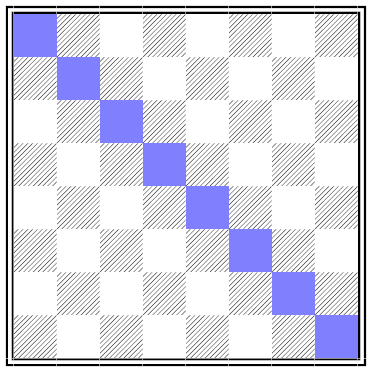
From the Soviet magazine KVANT, 1986:
On an n × n checkerboard, a square becomes “infected” if at least two of its orthogonal neighbors are infected. For example, if the main diagonal is infected (above), then the infection will spread to the adjoining diagonals and on to the whole board. Prove that the whole board cannot become infected unless there are at least n sick squares at the start.
The key is to notice that when a square is infected, at least two of its edges are absorbed into the infected area, while at most two of its edges are added to the boundary of the infection. Thus the perimeter of the infected area can’t increase; in order for the full board (with perimeter 4n) to become infected, there must be at least n infected squares to begin with.
